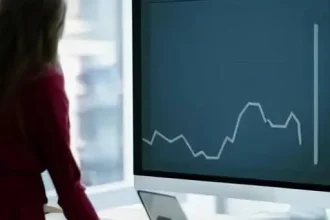In the dynamic, often exhilarating world of foreign exchange, where trillions of dollars change hands daily, success hinges not merely on intuition but on rigorous analysis and a deep understanding of market mechanics. Among the myriad factors influencing currency pairs, volatility in forex stands out as perhaps the most pivotal. It is the very pulse of the market, dictating risk, opportunity, and ultimately, the potential for profit. For both seasoned veterans and aspiring traders, grasping its nuances is not just advantageous; it is absolutely essential for navigating the unpredictable currents of global finance.
Imagine the forex market as a vast, unpredictable ocean. Volatility, in this analogy, represents the height and frequency of its waves. A calm sea offers steady, predictable sailing, while a tempestuous one presents both immense danger and the thrilling prospect of riding colossal waves to new heights. Understanding these market “waves”—their size, direction, and intensity—empowers traders to make informed decisions, protecting capital during choppy periods and capitalizing on the exhilarating surges. By integrating insights from sophisticated analytical tools and a keen awareness of economic forces, traders can transform uncertainty into a powerful strategic advantage, charting a course toward remarkable financial growth.
| Method/Indicator | Description | Relevance/Use in Trading |
|---|---|---|
| Average True Range (ATR) | A technical indicator measuring market volatility by averaging the true ranges over a specified period. It calculates the maximum of: current high minus current low; current high minus previous close absolute; current low minus previous close absolute. | Helps set stop-loss levels, size positions, and identify periods of increasing or decreasing volatility. Higher ATR suggests greater price swings. |
| Standard Deviation | A statistical measure quantifying the amount of variation or dispersion of a set of data values. In forex, it measures how much prices deviate from their average over time. | Offers a quantitative measure of historical volatility. Higher standard deviation indicates greater price dispersion and thus higher volatility. Often used in conjunction with other indicators like Bollinger Bands. |
| Bollinger Bands | Comprised of a simple moving average and two standard deviation bands plotted above and below it. The bands expand and contract based on market volatility. | Visualizes volatility; widening bands suggest increasing volatility, while narrowing bands (a ‘squeeze’) often precede a significant price movement. Useful for identifying overbought/oversold conditions in trending markets. |
| Economic Calendar & News Events | A schedule of upcoming economic data releases, central bank announcements, and geopolitical events that impact currency values. | Crucial for anticipating event-driven volatility. High-impact news (e.g., interest rate decisions, Non-Farm Payrolls) can trigger massive, rapid price swings, creating both significant risk and opportunity. |
| Implied Volatility (from Options) | The market’s forecast of a likely movement in a currency pair’s price, derived from the prices of currency options. While direct forex options are less common for retail, the concept applies. | Reflects market sentiment and expectations for future price movements. Higher implied volatility suggests traders anticipate larger price swings in the near future. |
| For more in-depth learning on forex trading and volatility, visit: Investopedia ⎯ Forex Volatility | ||
The Unseen Forces: Decoding Market Movements
Understanding how to determine volatility in forex is akin to possessing a sixth sense in trading. Historically, traders have relied on statistical measures like the Average True Range (ATR) and Standard Deviation. The ATR, meticulously tracking the average range of price movement over a specific period, provides a remarkably effective gauge of a currency pair’s typical daily fluctuation. Similarly, standard deviation, a foundational statistical concept, quantifies the dispersion of prices around their mean, offering a clear, numerical representation of historical choppiness. These metrics, while backward-looking, are incredibly valuable, offering a foundational blueprint for understanding past behavior and setting realistic expectations for future movements.
However, the modern forex landscape demands a forward-looking perspective. Savvy traders meticulously track the global economic calendar, recognizing that pivotal economic data releases and central bank pronouncements act as veritable seismic events, capable of unleashing torrents of volatility. A surprise interest rate hike from the European Central Bank or an unexpected shift in the Federal Reserve’s dovish stance can send currency pairs like EUR/USD soaring or plummeting within seconds. By diligently monitoring these high-impact events, traders can strategically position themselves, anticipating the ripples of news before they become tidal waves, or prudently stepping aside to avoid unnecessary risk. This proactive approach, distinguishing successful traders from those merely reacting, underpins consistent long-term performance.
Beyond the Basics: Advanced Tools and Expert Insights
Beyond the fundamental statistical and event-driven analyses, a plethora of technical indicators offer visual cues to volatility. Bollinger Bands, for instance, expand and contract around a moving average, graphically illustrating periods of high and low volatility. When the bands widen, it signals increased price dispersion, often preceding a significant trend. Conversely, a ‘Bollinger Squeeze’—where the bands narrow considerably—frequently portends an imminent breakout, offering tantalizing entry points for alert traders. Integrating such visual tools provides a holistic view, complementing the raw data with intuitive graphical representations.
The cutting edge of volatility analysis is increasingly being shaped by technology. Artificial intelligence and machine learning algorithms are now processing vast datasets—from market sentiment in social media to high-frequency trading patterns—to predict volatility with unprecedented accuracy. These sophisticated models can identify subtle correlations and emergent patterns that would be invisible to the human eye, offering predictive insights into market temperament. While still evolving, these AI-driven tools represent the future of market analysis, promising to equip traders with an even more granular understanding of price dynamics and potential market shifts. Embracing these technological advancements will undoubtedly redefine the landscape of forex trading.
The Path Forward: Cultivating a Volatility Mindset
Ultimately, mastering volatility in forex is an ongoing journey, requiring continuous learning, adaptability, and a resilient mindset. It’s about understanding that volatility is not an enemy to be feared, but a fundamental characteristic of the market to be respected and leveraged. Expert analysts consistently advise developing a multi-faceted approach, combining historical data, technical indicators, fundamental analysis, and a keen awareness of global events. This comprehensive strategy empowers traders to navigate both the calmest and most turbulent market conditions with confidence and precision.
As the global economy continues its relentless evolution, driven by technological innovation and shifting geopolitical tides, the forex market will remain a vibrant, often volatile arena. For those prepared to embrace its inherent dynamism, armed with robust analytical frameworks and a forward-looking perspective, the opportunities for growth are virtually limitless. By diligently honing your skills in determining and interpreting volatility, you are not just predicting market swings; you are actively shaping your financial future, transforming potential chaos into remarkable, sustained success. The time to empower your trading journey with this indispensable superpower is now.






